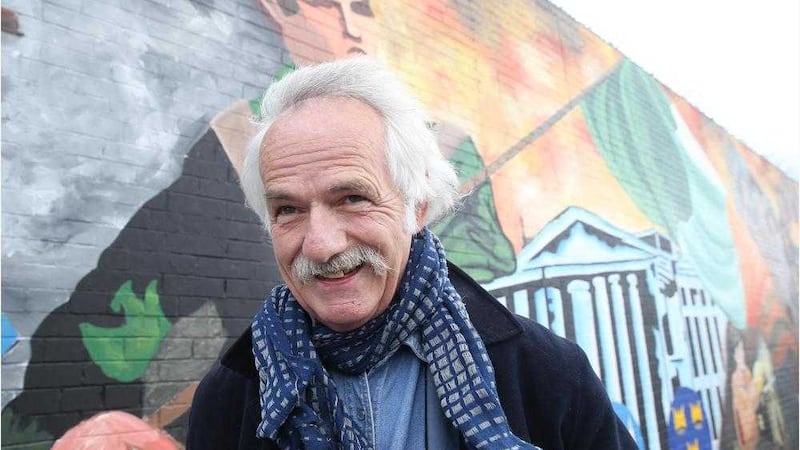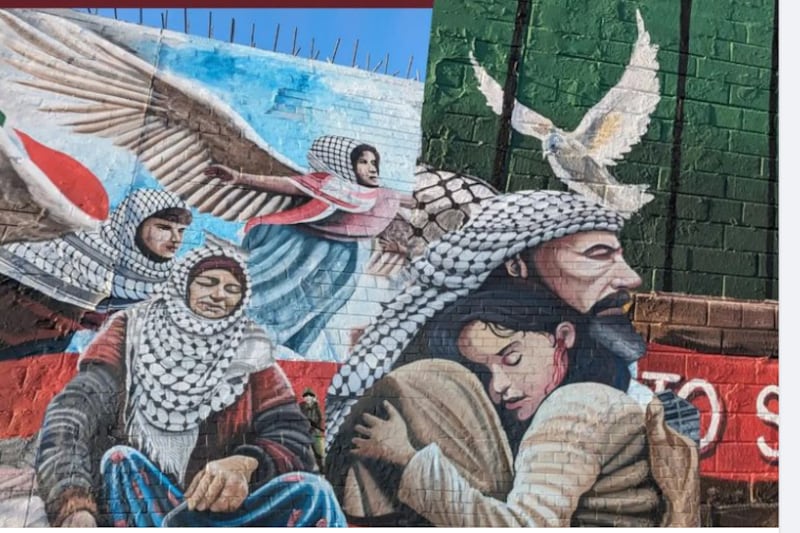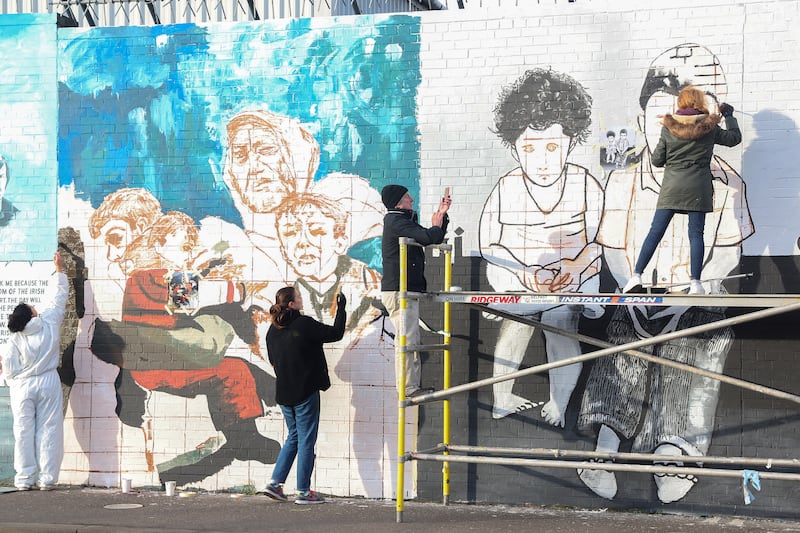A MURAL telling the Easter Rising story from a 'Belfast narrative' has been unveiled at the 'international wall'.
Several hundred people, including international artists and activists behind Dublin's Save Moore Street campaign were in attendance for the unveiling of the mural that has caused some controversy after Edward Carson, one of the founding members of the UVF was including in the Falls Road artwork.
Former Sinn Féin councillor and historian Tom Hartley said the mural was "trying to tell the story of republicanism in this city".
"It's very important that we tell our history, so it doesn't just become a Dublin centric story, with these Belfast men and women who played central roles," he said.
The painting of Edward Carson has been paint bombed several times since it was placed on the wall and has not to date been repaired.
Mr Hartley said that it was an important part of Belfast's history: "In essence the creation of the Ulster Volunteers stimulates the creation of the Irish Volunteers, it's part of the history of this island, we can't just take a silo view of history.
"To understand the Irish volunteers in their time then you have to also see the context of what was driving unionism at the time and Carson was central to that," he added.
Artist Danny Devenny is widely recognised as the 'custodian' of the international wall having first seen the potential to turn it into a place to highlight both local and international political issues more than 15-years-ago.
He said when first approached about the Rising mural he had reservations.
"It wasn't initially an inspiring commission, but then when you start reading the history of it I found it fascinating.
"We only really know all about Dublin and what happened in the south and that's because northern republicans were unable to tell their story for fear of being arrested.
"The people on this mural were under threat of arrest or assassination", he said.
A former republican prisoner, Mr Devenny said he is always aware that "our history is ongoing it isn't complete yet".
Part of the wall contains a mural on behalf of a republican prisoners group, it was covered over with a canvas Proclamation for Wednesday's unveiling which was removed shortly afterwards.
"When I first started painting on the wall many years ago I painted imagery to draw attention to the prisoners in Maghaberry," Mr Devenny said.
"Prisoners who I wouldn't at all agree with their politics but I did the mural because it was to highlight prison issues, as time moves on that seems to have got lost.
"Despite people attacking this mural in the early days we were able to achieve our objective because people are discussing the mural and the history of that time."






